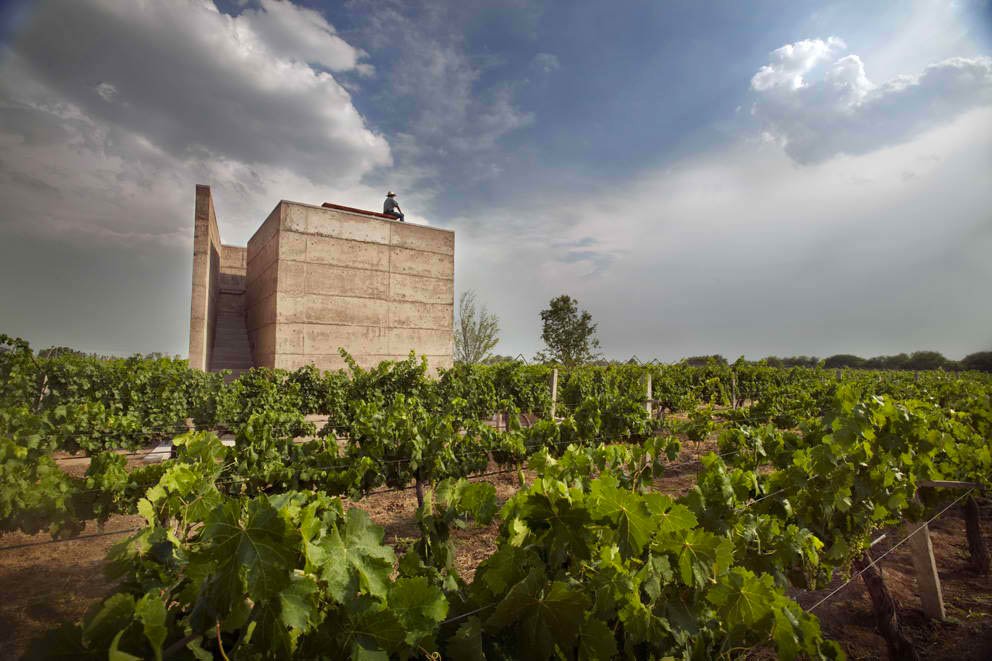Mexican Natural Wine Finds a New Home in Guanajuato

[ad_1]
A new wave of Mexican wine is on the rise in Guanajuato, a state in the central highlands. While the area is internationally known for tourism hub San Miguel de Allende, just outside the city lies the country’s fourth-largest and fastest-growing wine-producing state—not to mention one of its youngest, with 30 wineries and modern viticulture practices dating to the early 2000s.
Consultant oenologist Natalia López Mota and her Balkan partner, Branko Pjanic, are part of the crew in Guanajuato. The couple began making wine in Mexico in 2012, and today produce their own unfiltered blends under the Cava Garambullo label. They ferment mostly organic grapes with natural yeast and minimal intervention.
“Cava Garambullo is exciting; they’re trendsetters,” says Sandra Fernandez, a sommelier in Mexico City. “They’re raising awareness [for natural wine], and Guanajuato is definitely at the front of this movement.”

While Guanajuato has a smattering of large luxury lifestyle estates like Tres Raíces and Viñedos San Lucas, it’s also home to several smaller-scale natural and organic wineries. These vintners eschew industrial yeasts, synthetic chemicals, pesticides and herbicides for eco-sensitive farming methods.
Red wines like Malbec, Merlot, Syrah, Cabernet Sauvignon, Tempranillo and Cabernet Franc account for roughly 70% of Guanajuato’s production. White varieties include Sauvignon Blanc, Sémillon, Chenin Blanc and Viognier.

Lighter wines with lower alcohol levels are emerging, too, thanks to the state’s climate. The average elevation is 6,500 feet above sea level, with cold winters, hot summers and a wide diurnal temperature range.
“This style of wine is very much sought after by top Mexican chefs who love to use them for food pairings,” says Fernandez. “Menus are getting lighter and more vegan-oriented, top chefs are only using organic produce, and these wines work very well with their philosophy.”
Still, she says, vinos naturales, or natural wines, are currently a niche product in Mexico, enjoyed by younger drinkers in the wine bars of Mexico City’s hipper neighborhoods.
Frenchman Gaëtan Rousset, cofounder of Loup Bar in Mexico City, believes Cava Garambullo has “a real terroir-driven approach,” and cites Marcelo Castro Vera’s Octagono label as a more extreme example of Guanajuato’s wine revolution. The first wines in Mexico to be fermented and stored in buried clay vessels, the Octagono range is made from organically farmed fruit, using ambient yeast and zero added sulfur. These rustic bottlings include an orange cuvée and a pétillant-naturel.

One of the earliest leaders of Guanajuato’s winemaking resurgence is Viñedo Cuna de Tierra, a 98-acre, high-elevation estate in Dolores Hidalgo. It released its first wine in 2005 from French varieties planted in the early 1990s.
“Our vines are planted at around 2,000 meters [6,561 feet] above sea level, which means cooler temperatures and very little disease pressure,” says Winemaker Juan Manchon. “As a result, the grapes have crisp acidity and freshness, and we use very few products in the vineyard.”
Bodega Dos Búhos, which released its first wines in 2008, vinifies organic grapes and ferments with wild yeast to make organic-certified wines. Formerly a peach orchard, the family-owned vineyard is located on the Guanajuato Rutas del Vino, a wine tourism route that canvasses 15 estates.

At Viñedo los Arcángeles, Ulises Ruiz started making almost-organic, unfiltered wines in 2017. Last year, his Canto de Sirenas Sauvignon Blanc 2020 won a Grand Gold medal and the White Wine Revelation 2021 title at the annual México Selection competition.
“I don’t use pesticides or herbicides, but I work with both natural and selected yeast, depending on what I want to make,” says Ruiz, who is currently experimenting with orange wines. “We’re a small winery dreaming big. I’m just a guide for the grapes: I want them to express the essence of what this region can give to the world.”
[ad_2]




